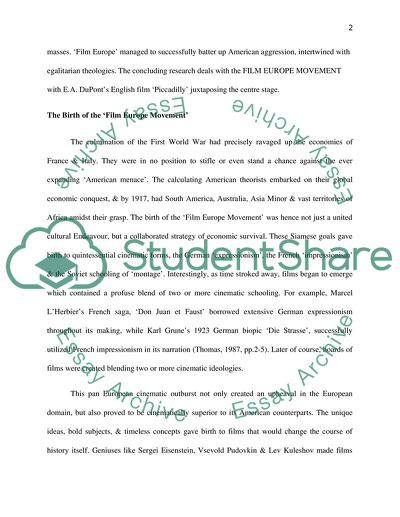Cite this document
(“The Aesthetic and Economic Characteristics of the Film Europe Movement Essay”, n.d.)
The Aesthetic and Economic Characteristics of the Film Europe Movement Essay. Retrieved from https://studentshare.org/visual-arts-film-studies/1579050-discuss-the-aesthetic-as-well-as-economic-characteristics-of-the-film-europe-movement-referring-to-a-filmic-case-study-of-your-choice
The Aesthetic and Economic Characteristics of the Film Europe Movement Essay. Retrieved from https://studentshare.org/visual-arts-film-studies/1579050-discuss-the-aesthetic-as-well-as-economic-characteristics-of-the-film-europe-movement-referring-to-a-filmic-case-study-of-your-choice
(The Aesthetic and Economic Characteristics of the Film Europe Movement Essay)
The Aesthetic and Economic Characteristics of the Film Europe Movement Essay. https://studentshare.org/visual-arts-film-studies/1579050-discuss-the-aesthetic-as-well-as-economic-characteristics-of-the-film-europe-movement-referring-to-a-filmic-case-study-of-your-choice.
The Aesthetic and Economic Characteristics of the Film Europe Movement Essay. https://studentshare.org/visual-arts-film-studies/1579050-discuss-the-aesthetic-as-well-as-economic-characteristics-of-the-film-europe-movement-referring-to-a-filmic-case-study-of-your-choice.
“The Aesthetic and Economic Characteristics of the Film Europe Movement Essay”, n.d. https://studentshare.org/visual-arts-film-studies/1579050-discuss-the-aesthetic-as-well-as-economic-characteristics-of-the-film-europe-movement-referring-to-a-filmic-case-study-of-your-choice.


